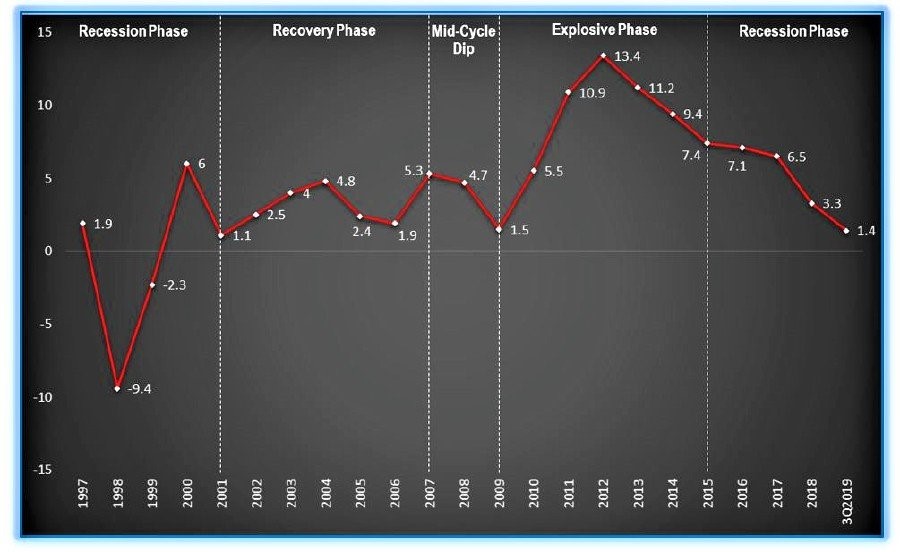
6/1/2023, 3:53:32 AM
Capitalising on falling property prices
The recent pandemic has exacerbated the level of uncertainty in the global economy, with the trajectory of its recovery difficult to forecast given the absence of a vaccine and continuous resurgence of the virus in many countries around the world. The real estate sector has not been spared from the recent economic downturn, further reducing buyer sentiments in a market that is struggling with property overhang as well as financial security. For homeowners or renters, this may mean that many will be less likely to afford the homes they were previously hoping for before the pandemic struck. This in turn leads to the rapid decline in demand for luxury homes or properties that were once considered affordable, further driving the market into uncertainty. Despite the initial bleak outlook posed by many real estate experts and financial institutions, the Recovery Movement Control Order (RMCO) has seen an uptick in property interests by buyers due to the government incentives that aim to stabilise the fluctuating real estate supply and demand trend that could potentially lead to a price crash if the situation is not well managed from the start.
- The Law of Supply and Demand
The law of supply and demand is a basic economic principle that explains the relationship between supply and demand for goods or services, and how that interaction affects the price of that good or service. When there is a high demand for a good or service, its price rises. If there is a large supply of a good or service but not enough demand for it, the price falls. The reason is that people will bid up the prices when there is relative scarcity, and there will be unsold items when there is an oversupply.
- Real Estate Supply and Demand
The property market relies heavily on the supply and demand rule as well. As with every transaction of a property, the process involves a buyer and a seller where the buyer places an offer to buy a property, leaving the seller to accept or reject the offer.
Some of the factors that will influence housing demand include lower interest rates or borrowing costs. When interest rates are low, people are generally willing to take on more debt because they can afford relatively more debt for the same monthly outlay. To summarise, buyers may be able to finance the purchase of a home because the amount of interest they have to pay is not as unmanageable at low rates. As more buyers enter the market, the demand for housing increases in turn. And if there remains a limited supply of housing inventory, prices in a low interest rate environment may rise even more which puts the supply of housing is in a constant state of flux.
During the lead-up to the financial crisis, consumers tend to enjoy relatively low borrowing rates due to government or financial institutions’ assistance. Banks begin to offer lower rates on mortgages and may go as far as relaxing lending standards. Buyers who weren’t otherwise able to afford a home before, suddenly found themselves able to realize their dreams of homeownership. Many of these consumers, called sub-prime borrowers, were able to snag a home with very low down payments even though they had very low credit scores. During this time, speculative buyers will also begin to enter the market, driving up demand for housing and, at the same time, cutting into the available supply.

- Investment trend post-pandemic
For investors, real estate is a tangible asset made up of property and the land on which it sits. This means that the prices of homes, like those of stocks and bonds, depend heavily on the law of supply and demand. More demand, prices tend to rise; more supply, they tend to fall. The recent pandemic put a near-halt in property transactions, which also triggered a recession phase, thereby opening opportunities for property prices to fall given the low demand and high supply.
Over the short term, investment activity in global commercial real estate is expected to slow. The Covid-19 crisis has created a new downtrend in the real estate market with prices of residential properties anticipated to remain subdued indefinitely. Restrictions and uncertainty around valuation is limiting investors’ ability to perform due diligence, and it is more challenging to execute transactions. Delayed launches and elongated transaction timelines are increasingly evident in affected markets as city lockdowns, travel restrictions and social distancing become commonplace around the world.
- Government assistance to uplift the property market during the RMCO
The reintroduction of the home-ownership campaign (HOC) featuring stamp duty exemptions and the uplifting of the margin of financing limit for the third housing loan onwards for property valued at RM600,000 as well as real property gains tax (RPGT) exemption unveiled in the short-term economic recovery plan (Penjana) will help to stimulate the property market. Most beneficial for current homeowners is the introduction of the 6-month loan moratorium by the government, which ends in September 2020.
The central bank, Bank Negara Malaysia, has also cut the overnight policy rate (OPR) thrice during the first half of the year with a further 25 basis points reduction to 1.75 per cent recently, to help speed economic recovery.
The lower monthly loan repayments coupled with the automatic loan moratorium for six months from April 1, will provide some financial relief to households amid the current crisis. However, there is still much uncertainty for many homeowners once the moratorium ends and the economy does not recover fast enough to provide job availability for people to continue servicing their loans.
This uncertainty will almost certainly contribute to changes in property pricing in the long run which provides an opportunity to purchase such properties at reduced prices.
- Discounts and promotions by developers to boost market
In the middle of the Covid-19 crisis, many property developers have been giving steep discounts and various other rebates to homebuyers as an incentive to own a house during this critical time. Some property developers are left with no choice as their inventory piles up due to a slowdown in sales made worse with construction activity almost coming to a grinding halt. Discounts, rebates and incentives are common sales and marketing strategies particularly to stimulate the market when it’s slow, or in some cases as a tool to compete in an environment where supply is high and demand is low for a particular property type.
- Expert opinions
Many property experts expect the situation, if it worsens, to lead to an increase in non-performing loans (NPLs), especially after the six-month loan moratorium ends. Henry Butcher (M) Sdn Bhd chief operating officer Tang Chee Meng says as more people lose their jobs or have their pay cut, their ability to service their loans will be affected, further driving down property prices as people will look for quick disposal of their assets in return for liquidity.
Owners of rental properties for short-term stays would be hit even harder as their properties are normally located in the city centre and thus cost more. While they generally do not expect to see a sharp drop in property prices, the experts believe more properties will be put on sale in the next two years because of lacklustre economic conditions.
As more than 66% of the overhang in property is in the condominium/apartment and serviced apartment as well as the SoHo (small office home office) categories, and developers are eager to unload the unsold units, VPC Alliance (Malaysia) Sdn Bhd managing director James Wong expects prices in these two categories to fall further this year.
Many experts note that the next nine months would be a good time — for investors, not speculators — to pick up properties. Investors are those who analyse the market, calculate the risk and are prepared to hold the properties for the long term. Given that the market has been depressed for the past three years and prices have been low, the lacklustre conditions will see some owners putting their properties up for sale at a lower price than they were asking for a few months ago.